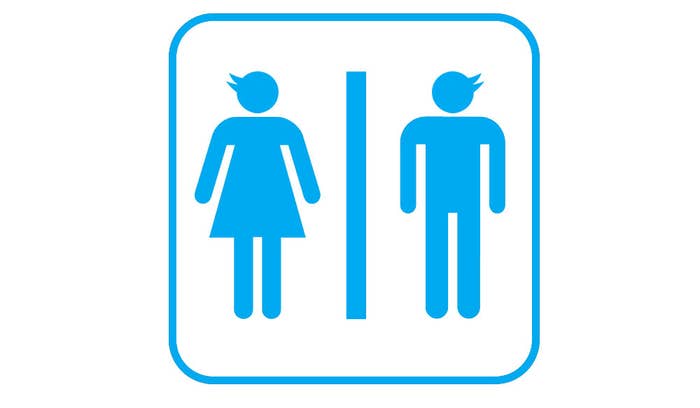
A recent academic study found that while a number of sex-specific stylistic trends exist across the way people write on Twitter, these patterns aren't true for everyone.
The study concluded that a number of female users and male users do employ language more typical of the "opposite sex," and that a user's tweets are more likely to sound like his/her sex if he/she has significantly more Twitter friends of the same sex. (Know your audience, etc.) The researchers note that other factors like age, race, and class factor into the way people tweet, and they take a refreshingly non-gender essentialist stance: Men and women, on the whole, might tweet in different ways, but that's hardly nature's doing. Instead, this is a study about how we're learning to communicate with and from each other, which is fascinating.
Researchers and study authors David Bamman, Jacob Eisenstein, and Tyler Schnoebelen organized their study, in part, based on previous research of this kind: In 2010, a separate study of 1,000 Twitter users found that "female authors were more likely to use emoticons, ellipses (…), expressive lengthening (nooo waaay), repeated exclamation marks, puzzled punctuation (combinations of ? and !), the abbreviation omg, and transcriptions of backchannels like ah, hmm, ugh, and grr." Male Twitter users, on the other hand, had fewer significant attachments to certain forms of expression, using only "affirmations like yeah and yea" much more frequently than female users.
The study by Bamman et al broadened their study to 14,464 Twitter users, examining the linguistic devices used and how they related to users' gender identity (assumed from users' first names, so long as those first names were identifiable as popular, gendered names) and those users' number of Twitter "friends" of either sex. In total, the authors examined 9,212,118 tweets.
The study's results did mirror, in some ways, the aforementioned 2010 research on this topic:
All of the pronouns detected by our Bayesian analysis as gender markers are associated with female authors: yr, u, ur, she, she'll, her, hers, myself, herself…Female markers include a relatively large number of emotion-related terms like sad, love, glad, sick, proud, happy, scared, annoyed, excited, and jealous. All of the emoticons that appear as gender markers are associated with female authors, including some that the prior literature found to be neutral or male: :) :D and ;).
Additionally, girls and women on Twitter do, in aggregate terms, like to lengthen our words. Interestingly, a number of the other "female" linguistic devices identified by this research seem reflective of the way we might say these things when speaking aloud to each other, pauses and exaggeration and all: "Computer mediated communication (CMC) terms like lol and omg appear as female markers, as do ellipses, expressive lengthening (e.g., coooooool), exclamation marks, question marks, and backchannel sounds like ah, hmmm, ugh, and grr."
Swearing, on the other hand, is most often associated with male Twitter users: "Swears and other taboo words are more often associated with male authors: bullshit, damn, dick, fuck, fucked, fucking, hell, pussy, shit, shitty are male markers."
Contrary to earlier studies that indicated "affirmations" were more likely a guy thing, this study found that girls on Twitter speak just as decisively, if in a more stylized way: "Okay, yes, yess, yesss, yessss are all female markers (as noted above, expressive lengthening also appears more frequently with women), though yessir is a male marker. Nooo and noooo are female markers, but again, this may reflect the greater likelihood of women to use expressive lengthening."
Unsurprisingly to probably everyone, "nah" was found to be a male marker.
Overall, women users seem to possess the strongest ties to the greatest number of markers, which speaks to a distinct form of speech but also, I think, a (continuing) shift toward the conversational tone these devices reflect — something the female Twitter users studied here might well be at the helm of. As a contrast to the weird, obsessive hand-wringing we've seen regarding other forms of female speech — like with lengthened, deep verbal tones, or vocal fry — this is a study that points out the strength-in-numbers of female speech without worrying about what it means for dudes on Twitter. We are all, essentially, borrowing from each other. Everything is coooool. :)
